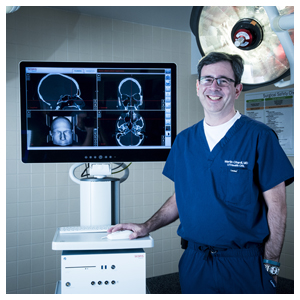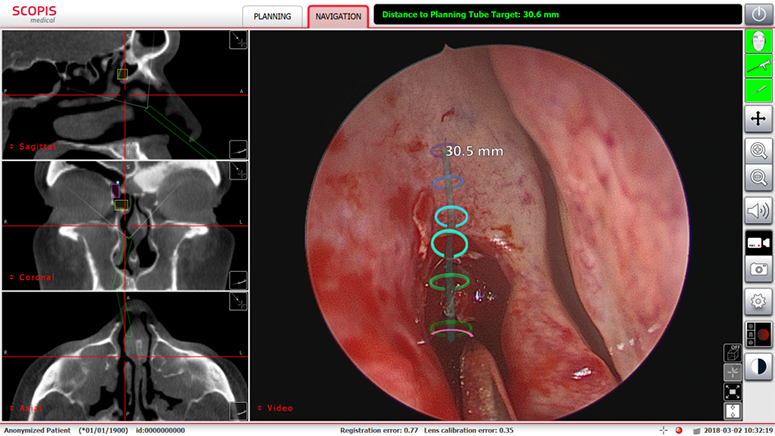UTHealth/Memorial Hermann Conduct First Sinus Surgery in U.S. Using Augmented Reality Technology
 Sinus surgeons with The University of Texas Health Science Center at Houston (UTHealth) and Memorial Hermann-Texas Medical Center were the first in the United States to use augmented reality technology during minimally invasive sinus procedures.
Sinus surgeons with The University of Texas Health Science Center at Houston (UTHealth) and Memorial Hermann-Texas Medical Center were the first in the United States to use augmented reality technology during minimally invasive sinus procedures.
“Augmented reality, which uses 3-D mapping and imagery, enhances our understanding of complex anatomy so surgical procedures are more precise,” said Martin J. Citardi, MD, chair of the Department of Otorhinolaryngology–Head and Neck Surgery in McGovern Medical School at UTHealth. “The addition of augmented reality to a surgical navigation system offers patients the benefits of minimally invasive surgery with lower risks and better outcomes.”
Dr. Citardi performed revision image-guided functional endoscopic sinus surgery for recurrent chronic rhinosinusitis earlier this year at Memorial Hermann-Texas Medical Center. In addition, the patient also had a fibro-osseous lesion blocking drainage from the left frontal sinus. “This was a complicated case. By using this technology, we were able to plan a pathway to drain that blocked frontal sinus and avoid the need for a more extensive procedure,” Citardi observed.
In Dr. Citardi’s view, augmented reality technology has the potential to improve many sinus procedures, including those performed for inflammatory diseases, chronic sinus conditions, sinonasal polyps, skull base repairs and tumors. “During surgery, we can see how close we are to our surgical target in millimeters or see our path along a trajectory,” Dr. Citardi said. “This enhances our surgical precision, minimizes potential damage to nearby structures because the technology reduces some of the mental gymnastics needed to navigate complex anatomy.”
Performed with Stryker’s Scopis Target Guided Surgery (TGS) technology, the system gives surgeons the tools to plan pathways and critical structures in preoperative medical imaging scans. During surgery, this planning is overlaid onto the surgeon’s endoscopic view of the surgical area. The system assists the surgeon in following the defined pathway and avoiding critical structures.
“This system also allows easy recording of both the surgery and surgical planning. Such digital content will be important for training of surgeons in the difficult area of endoscopic sinus surgery. This will ultimately benefit patients,” said Dr. Citardi, who is affiliated with UT Physicians, the clinical practice of McGovern Medical School, and Memorial Hermann-TMC.
